Whether it is a Big March or Big January or Big February or a Big Year or just birding in Washington, a highlight is always a trip to Walla Walla County and vicinity joining Mike and MerryLynn Denny for an entertaining day filled with birds, Natural History, stories, insights and more stories – and hopefully more birds. In planning my Big March adventure, an essential part was to be a multi-day trip to Eastern Washington that included time with the Denny’s and visits to the Shrub/Steppe/Sagebrush of Kittitas County and other areas in counties in between. The list of targets was big – more than 25 targets were on my list and 30 was an outside possibility. After the trip with luck, I should have well over 180 species in hand and maybe 190. Another early start and I was on the road before 6:00 a.m.
Great birder friend Deb Essman had been following my Big March from before its start keeping me up on sightings in her Kittitas County including the arrival of sagebrush birds. She had a nesting GREAT HORNED OWL and a friend had been seeing a BARRED OWL regularly. I had hoped for both but learned that the BARRED OWL had moved on. A first stop was at the bridge over the Cle Elum River near Bullfrog Pond. There was a possibility of good birds at the Pond but the main appeal was a likely AMERICAN DIPPER along the river where I have seen them maybe ten times. But not this time. And nothing at Bullfrog Pond either so I shifted to Plan B and headed for the bridge over the North Fork of the Teanaway River. There I quickly had two AMERICAN DIPPERS, undoubtedly a pair. I may have seen a quick copulation. So a good beginning even if it added some time and distance to the morning start.

Usually the arrival sequence for sage brush species is SAGEBRUSH SPARROW, then SAGE THRASHER, then BREWER’S SPARROW, then VESPER SPARROW and LARK SPARROW much later. LOGGERHEAD SHRIKES arrive sometime in the mix. My best place for BREWER’S SPARROW has been Durr Road just off Umptanum Road south of Ellensburg. It is also a great place for both WESTERN and MOUNTAIN BLUEBIRDS and WESTERN MEADOWLARK (all of which I had already seen) and possibly the other sage species. Hoping for the BREWER’s, I turned onto Durr Road and immediately was in sagebrush and also immediately had a LOGGERHEAD SHRIKE. As usual it was very windy and there were fewer birds than usual – both BLUEBIRDS and some MEADOWLARKS but no sparrows.
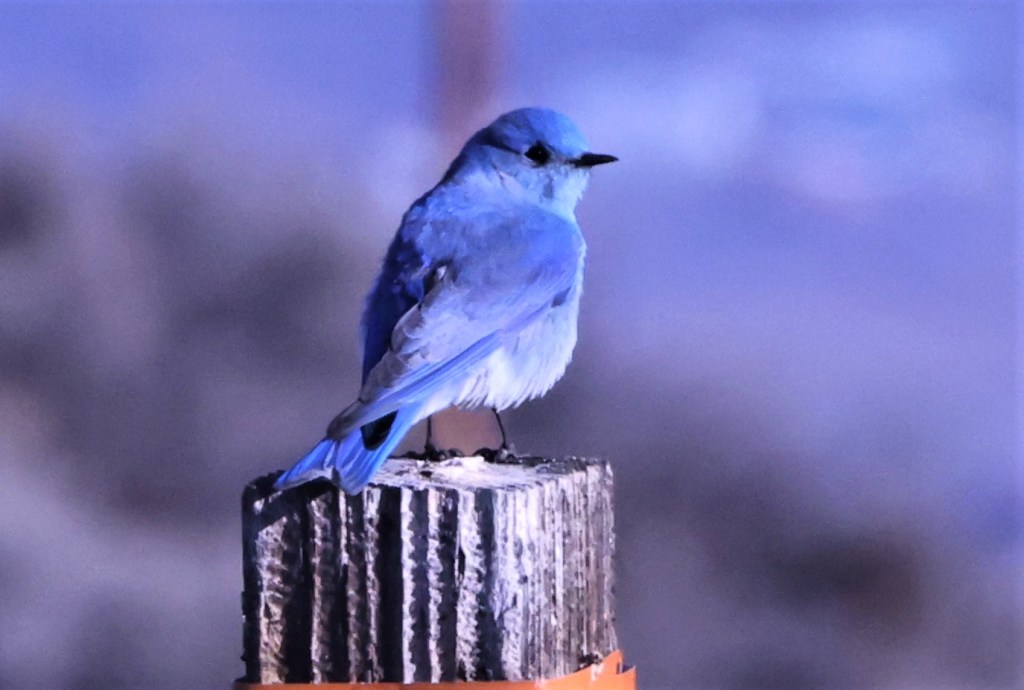
Then it was on to Deb Essman’s home. We found a GREAT HORNED OWL buried in a tree in her yard – disappointing for photos but then Deb remembered the nest and we got a much better view and photo op of the owl perched nearby. We drove by some fields where GRAY PARTRIDGE were possible and went to a cliff where GOLDEN EAGLE is sometimes seen. We found neither so headed for the sagebrush along Old Vantage Highway, where our first stop was at a place I have noted on my Garmin GPS as “Awesome Deb’s Awesome Sage”. Well Deb might be awesome but on this day the sage wasn’t at least bird wise. Not a one – just lots of wind.

The next good go to area for sage species area was at the corrals at Whiskey Dick/Quilomene. We heard not a sound as we hiked up into the hills. I have had SAGE THRASHER here and at Deb’s Awesome Sage spot every year and usually by this time. Maybe it was the wind, maybe just bad luck but nothing – until I heard a somewhat familiar song and found a solitary SAGEBRUSH SPARROW not too far from the corrals/entry. It is one of my favorite sparrows and this has been the best place for me to find them.
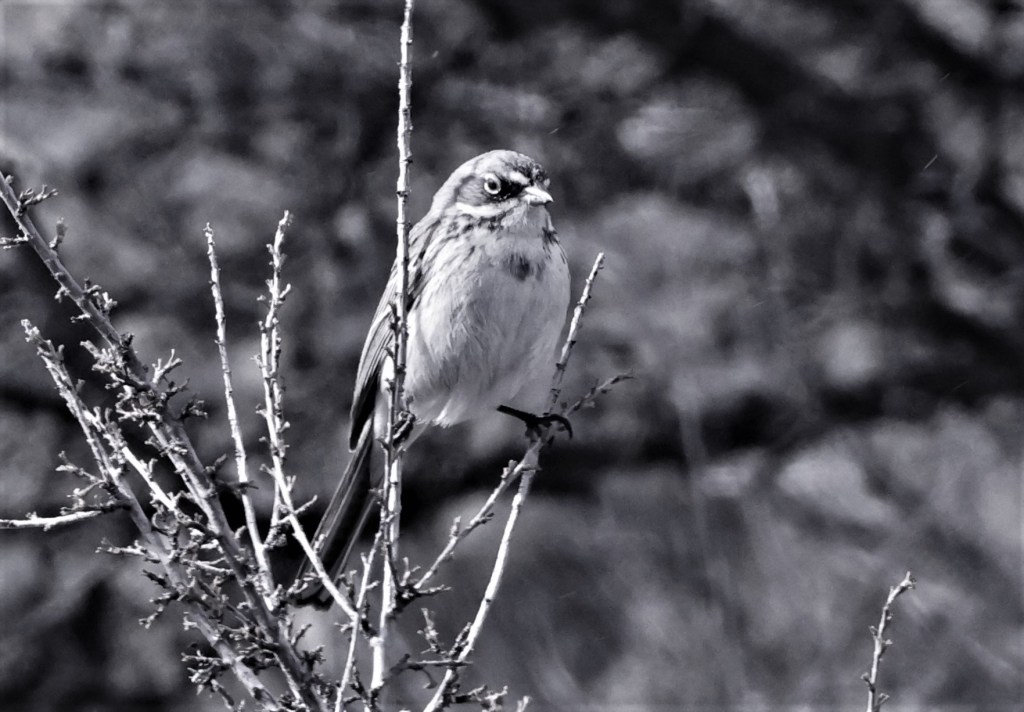
I carried on alone to Gingko State Park in Vantage, specifically to Recreation Road where I was hoping for a ROCK WREN all the time keeping my eyes open for GRAY PARTRIDGE or PRAIRIE FALCONS – both possibilities. Not unlike times in the past, it was easy to locate a calling ROCK WREN near the Rocky Coulee Boat Launch, but unlike those times, the WREN would not come in close, choosing to remain atop the cliff, perhaps sheltered in the wind. The WREN was the 5th new species for the day, but I had been expecting a BREWER’S SPARROW and a SAGE THRASHER, hoped for a PRAIRIE FALCON and earlier had thought a BARRED OWL was a good bet.
Decision time again. One option was to return to Interstate 90, cross the Columbia and try for WHITE THROATED SWIFT at FRENCHMAN COULEE, possibly finding a YELLOW HEADED BLACKBIRD nearby at Silica Ponds. Neither had been reported recently but it is an area that is not heavily birded so maybe there but unseen. Anyway I felt that both species could be seen elsewhere later. The second option was to head southeast to the Tri-Cities where two really good species had been reported recently – a NORTHERN MOCKINGBIRD on Snively Road in West Richland and a HARRIS’S SPARROW coming to a feeder in Pasco. I knew Frenchman Coulee and Silica Ponds well. I had no clue about the other spots. Nonetheless I opted for the latter as they were tougher birds to find and on the way to other places I wanted to hit that day.
It was a good choice. The MOCKINGBIRD was calling from a Russian Olive near a marsh that had hundreds of very noisy SANDHILL CRANES. I am often amazed at how noisy MOCKINGBIRDS can be and yet they can be buried in thick growth and essentially invisible – until they decide to come out and then perch conspicuously in the open. This fellow never made that decision remaining buried. On to Vic Hubbard’s home in Pasco. I did not know Vic but got his phone number from Phil Bartley, a great birder and acquaintance in the area. Vic gave great directions and said to drop by anytime. He was working on some projects but would come out if he could. He came out as soon as I arrived and we had a great visit, The visit included super appearances by the adult HARRIS’S SPARROW has visited his feeder for several months. He also had a juvenile, but I did not see that one while I was there.

Vic also got me in touch with Bill and Nancy LaFramboise who had recently seen FERRUGINOUS HAWK on 9 Mile Canyon Road, a key stop later that day. First I headed to Dodd Road near Burbank, WA hoping for YELLOW HEADED and TRICOLORED BLACKBIRDS, a BROWN HEADED COWBIRD and especially BARN OWLS in their hillside roost. It was only 20 miles away. Along the way I stopped to scope some large white blobs I saw in the Columbia River – my first AMERICAN WHITE PELICANS of the month. Along Dodd Road, there were hundreds of black birds coming in to the cattle feed lots. I tried to shift through them as they moved back and forth. I was only able to identify RED WINGED BLACKBIRDS and EUROPEAN STARLINGS. I could easily have missed TRICOLORED BLACKBIRDS but would have noticed YELLOW HEADED BLACKBIRDS – I did not. Fortunately further up Dodd Road there was at least one BARN OWL in one of the hillside roosting holes. In years past there have always been more than that. I learned later that they have been harassed by kids throwing rocks – aargh!!
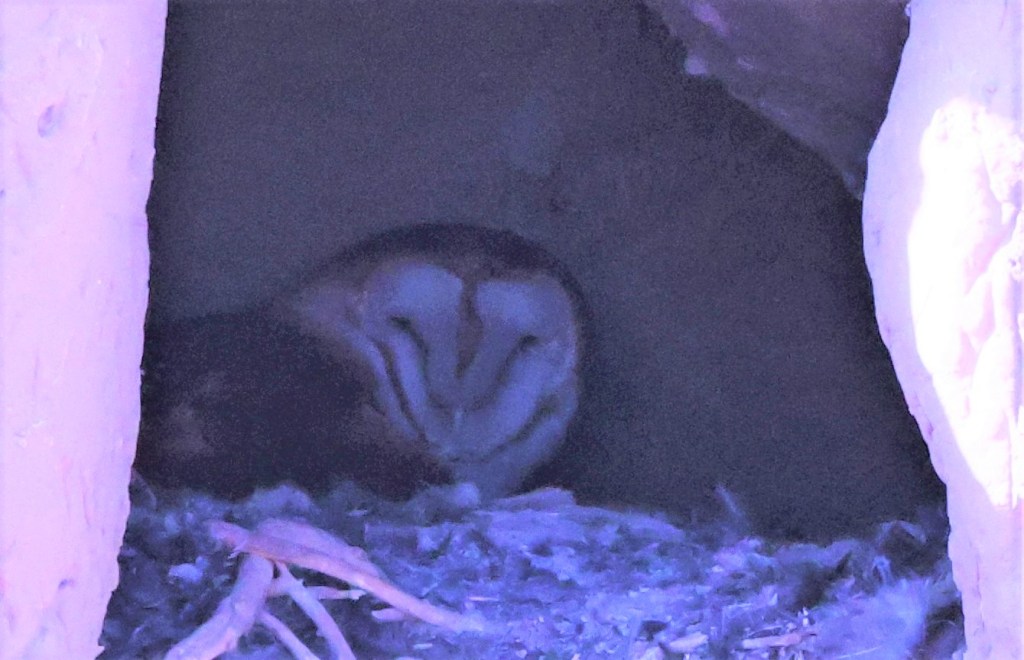
There are multiple spots on 9 Mile Canyon Road where FERRUGINOUS HAWKS have historically nested. Bill and Nancy had seen a pair on the distant nesting platform up a gulley not far up the road. I checked there first. There was no nest and there were no hawks. I drove further in and was fortunate to have a pair fly right over me a few miles in. They are really unmistakable – large almost eagle like hawks with long wings and striking coppery color and a white chest (light morphs). The view was too quick and car constrained for me to get a decent picture, but I love this hawk so am including one from the same area that I took a couple of years ago – quite possibly one of the same birds.

I backtracked west about 8 miles to Madame Dorion Park looking for a TOWNSEND’S SOLITAIRE that had been reported there recently. No luck and it was then after 4:00 pm. I would be out all day with the Dennys the next day so opted to head to Walla Walla where I would spend the night. A recurring theme the past week or so had been the up and down analysis and assessment of how I was doing. I had added 10 species that day including some very good ones, but I had also missed some that I frankly thought had been sure things. The species count was at 177 and there were high hopes for the next two days but the misses were nagging at me and I knew I could easily have been at 185 species or more if…if…if…
Day 16. I had sent a list of probable targets to MerryLynn ahead of the trip – birds that were within a far ranging area including some in Walla Walla, Franklin and Columbia counties. I had already seen a couple – FERRUGUINOUS HAWK and BARN OWL – but had missed YELLOWHEADED and TRICOLORED BLACKBIRDS so we started heading off again to the feedlots. Unlike the previous day, there were NO birds there. Probably would be there later but we had to move on. A top target was LONG EARED OWL. There are a couple of dense stands of Russian Olives where we generally find them. However, Mike said there had been some clearing and some harassment and the owls were not a sure thing. What is a sure thing, however, is that if there owls, the keen eyes of Mike and MerryLynn will find them. At our first stop we found a single owl buried so deep that all that was visible was a little bit of its body. Countable if desperate – which I was not quite yet – but hardly satisfying.
We continued on towards another stand of Olives on Smith Springs Road. A few years back on one of the Dennys’ Annual Owls by Day trips we had 7 LONG EARED OWLS in this spot. Before getting there we added the first new species for a day when MerryLynn called out a group of 8 RING NECKED PHEASANTS in a field. This species is found all through the state but many of the observations reported on Ebird are birds that were most likely released by Fish and Game for the hunters. No way to tell wild from “farm raised” but chances are much greater for the former in areas like this. At our Russian Olive stand, the keen eyes came into play and picked out two LONG EARED OWLS that I doubt I would have seen on my own. One was very low to the ground and was perfectly camouflaged. I could not get my camera to focus through the thick branches so I am including a photo from the same stand of trees on a previous trip – still somewhat buried but recognizable.
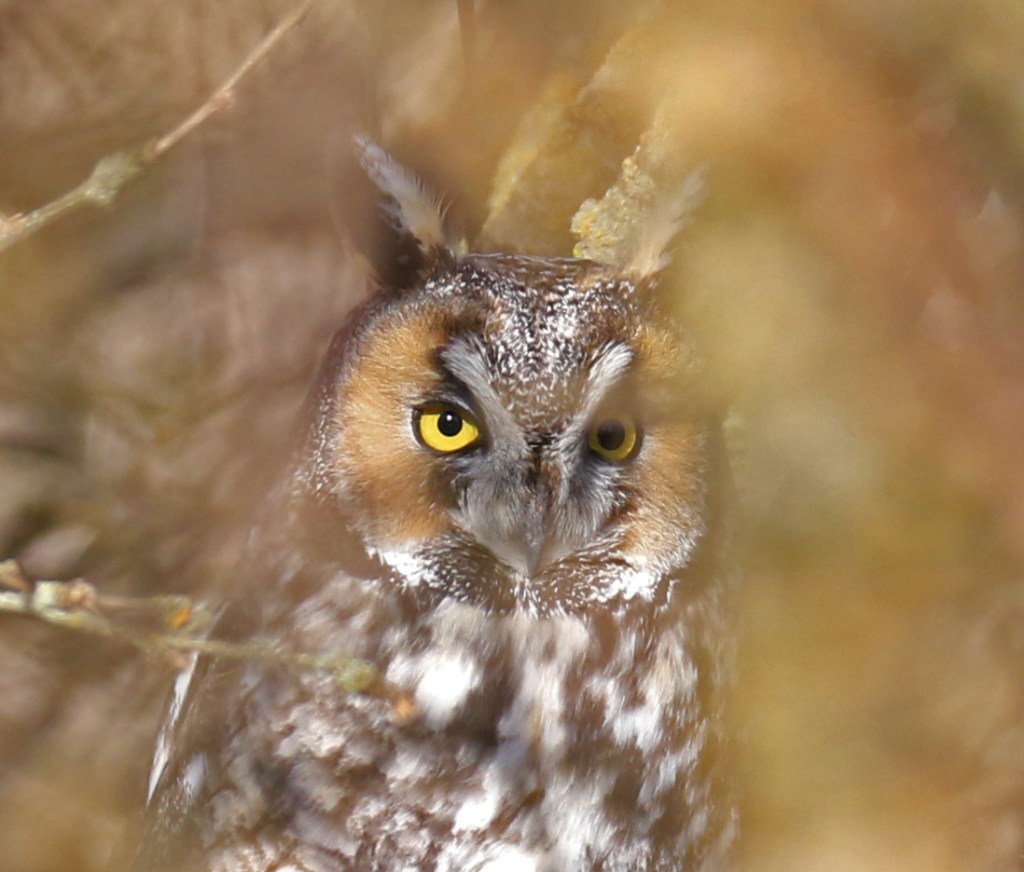
Further along Smith Springs Road we stopped at a woodlot where AMERICAN TREE SPARROW was a possibility. We saw no birds at all. Then at a second stop there was one SONG and 8 WHITE CROWNED SPARROWS and a LESSER GOLDFINCH. Just as we were leaving, I saw another sparrow fly into brush further back and heard it sing a single time. I am not familiar with the songs of the AMERICAN TREE SPARROW but this song was different than other sparrow songs I knew. To go look for it we would have had to tromp through some brush, so we did not. When I got back to the car I played the AMERICAN TREE SPARROW song and it was a match. MerryLynn said she had heard it as well. I debate whether to count “heard only” species. No trouble if they are familiar or if when testing against recordings, there is no doubt. I had no doubt and with MerryLynn’s confirmation, it made it on to the list hoping I would get well past 200 species and not have to rely on it to get there. I also had felt cheated in the Okanogan to miss this species so was motivated.
BLACK CROWNED NIGHT HERONS can be found in Western Washington – but rarely. I have always been able to add them to my lists on trips to the Walla Walla area – often seen from Ivarson Road – which was our next stop. Scoping the distant reeds, we saw 6 GREAT EGRETS, 8 GREAT BLUE HERONS and a single BLACK CROWNED NIGHT HERON. If we had missed it there I would have tried the pond near the animal shelter in Tri-Cities where I had great looks last year – but fortunately not needed this time.
Now what? There were no places to go where a targeted bird was guaranteed. We elected to try for LONG BILLED CURLEWS on Lambdin Road where I had them on a similar trip with the Dennys in April 2020 and where they are seen each year. The Dennys did not know if they were in yet, but it was worth a try. They were not in – but as an aside, they did arrive two days later – seen by the Dennys after I had departed. We also tried for CASPIAN TERNS that had been seen in the river but we failed to find any. Again, now what? There was a chance for three new species if we headed up into the Blue Mountains on Coppei Creek Road. NORTHERN PYGMY OWLS are regular there and MerryLynn had TOWNSEND’S SOLITAIRE there recently. It was also a good spot for GOLDEN EAGLE.
Playing by now a somewhat familiar theme, our birding in the mountains was very very slow. Several WILD TURKEYS, a HAIRY WOODPECKER, some JUNCOES, a couple of hawks and no owls. At a likely spot we watched a large raptor sail briefly over a ridge. Its wings were up in a slight dihedral and we had a good enough look to know it was not a TURKEY VULTURE but it was very far off and we could not get a scope on it as it was visible only briefly. The consensus was that it was a GOLDEN EAGLE and in fact when first seen, Mike had called it out as such. I decided to put it on the “tentative” list hoping I would see another one later and make it moot. That was the only new species for that part of the trip – tentatively.
We had covered a lot of ground and found 4 or maybe 5 new species. I had hoped for 8 to 10, so a disappointing birding day but fun as always with Mike and MerryLynn. Mike knows the history of every town and maybe every farm and ranch in the area, There are nonstop stories and copious information. A few more species and I would have called it a super day – guess I will settle for just a great day instead. I was due to meet with Jason Fidorra in the Tri-Cities the next day so had elected to change motels to one in Kennewick. After saying my goodbyes I made one last birding stop for the day and walked the Quail Trail at the McNary NWR Headquarters. In a little over 30 minutes I had 24 species with the prize for me being a single YELLOW HEADED BLACKBIRD – first hearing its distinctive call and then getting a photo as it perched at the end of some reeds. This was the 5th or 6th new species for the day bringing me to 182 or 183. Still behind schedule but I knew the next day would produce at least one new species, would be great fun, and there was the promise of more.

I had gotten Jason Fidorra’s contact information from Vic Hubbard. Jason is a Wildlife Biologist at the Washington Department of Fish and Wildlife and runs a BURROWING OWL program. Volunteering to help him with some burrow maintenance provided me an opportunity to meet him, learn from him and also to see some BURROWING OWLS. The work part was easy and the return was way more than worth it. Jason is easy going, knowledgeable, and I know it is irrelevant, but also really good looking. We spent a couple of hours at the Tri-Cities Airport and saw at least 4 and maybe as many as 6 BURROWING OWLS. A big bonus was hearing and then seeing at a distance a couple of LONG BILLED CURLEWS. It was interesting to see how the man made burrows were constructed to best protect the owls and to learn of their predation and also competition for burrows. Jason is himself an excellent birder but I think his real love may be mountaineering. Lots of stories.
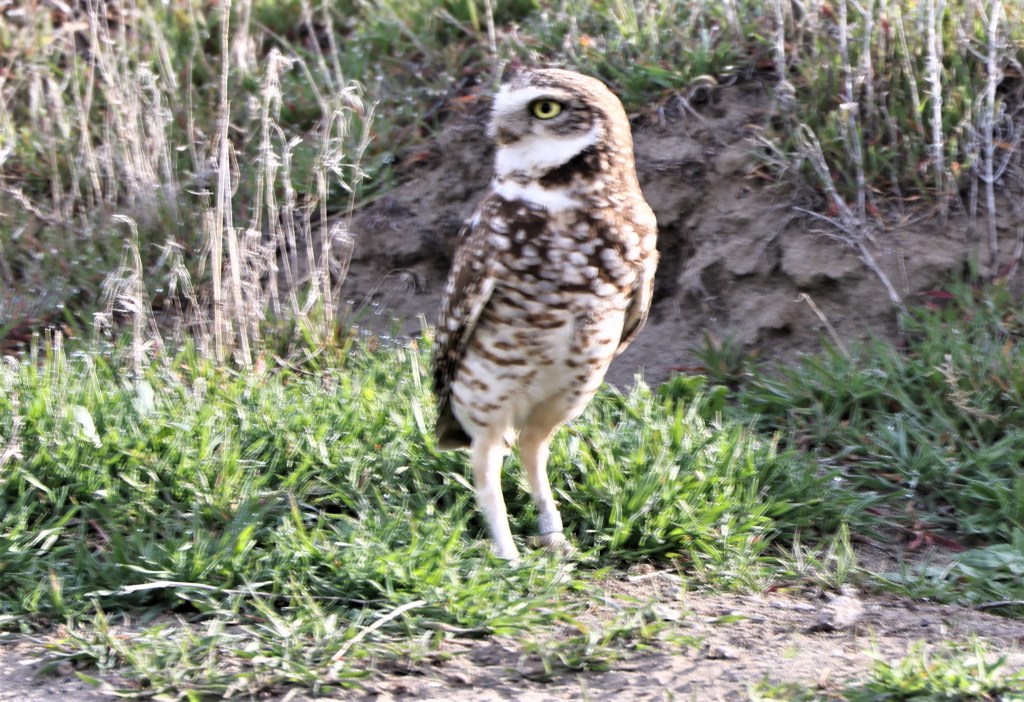
A great start to the day, Saint Patrick’s Day, probably should have somehow included a GREEN HERON or at least a GREEN WINGED TEAL for the day, but I was in countdown mode looking for new species. I hoped to make up for TRICOLORED BLACKBIRD misses the past two days with success at Para Ponds maybe getting BLACK NECKED STILT as well. There was no STILT and only a few blackbirds in the area – none TRICOLORED. I debated going to County Line Ponds looking for STILTS but changed course and instead headed to Yakima and more specifically to BBQ Flats Horse Camp. I had had good luck with WHITE HEADED WOODPECKERS there and there had also been a report of EVENING GROSBEAKS.
When I got to BBQ Flats, the road was closed but I was able to park and hike in. Almost immediately I heard some chattering calls that I thought good be EVENING GROSBEAKS. The birds themselves were high up and very active. Finally a clear view confirmed the ID and there were lots of them all through the area. Not really good photo ops in poor light and still high in the branches but a much welcomed new species for the month. On my Ebird report I said there were 90 EVENING GROSBEAKS but there easily could have been twice that number. There was also a small group of RED CROSSBILLS, PYGMY and RED BREASTED NUTHATCHES, and some CASSIN’S FINCHES. I never heard or saw any, but I am sure there were MOUNTAIN CHICKADEES there as well.

My primary target was WHITE HEADED WOODPECKER though. I heard a distant PILEATED WOODPECKER. I heard and saw a couple of NORTHERN FLICKERS but for the first 50 minutes there and admittedly trying lots of playback, there were no woodpeckers with whiter heads. I had circled through the wooded area and was back on the closed road heading back to the car when finally I heard drumming that I thought was from my quarry. There is a high fence that blocks access to what I think is the northern part of the area. The drumming was coming from there. I could not go in but was able to get a distant view of a WHITE HEADED WOODPECKER drumming on one of the pines. Whew – that would have been a bad miss. Then as it sometimes happens, almost back to the car a pair of WHITE HEADED WOODPECKERS flew right overhead and landed just above me, calling and then drumming. Success!!

It was about 2:20 pm and I was maybe 2 and a half hours from home. I could have tried for some sage birds again but figured I would just have to come back later in the month, so I called Cindy and said I would be home for dinner. The four new species that day were all good ones and brought my total to 187. There would be that pelagic trip on the 26th and some birding at the coast the day before that and maybe another trip to the sagebrush. 200 felt pretty secure. As with the other trips this month, there had been some misses and disappointments and the general reality is that that is almost always the case. Still, I had added 20 species in 3 long days. Back on track.
March 18 was an off day catching up after being gone for 3 days – well sort of. I did add a BROWN HEADED COWBIRD to get to 188. When I had first planned this assault, I noted that a mega rarity SIBERIAN ACCENTOR first seen in February 2020 had remained into March 2020 and thus made it onto my “possible” list. The WHOOPER SWAN seen on the first day of the project was equally rare now another mega-rarity made an appearance. On March 17th a mystery bird had shown up discovered by someone who knew it was something different but was not sure what. As a photo circulated it was determined to be a RED FLANKED BLUETAIL – possibly a first for Washington. Several birders had an early heads up and relocated it on the 18th. I got word of it early on March 19th and joined the hunt as it was less than ten miles from my home. It was crappy weather but with many eyes watching the BLUETAIL was refound and word traveled via text and phone. I joined at least a dozen birders who got quick views of it buried in plants at the backyard of a home near where it was originally found.
I had seen this species three times before: first at the Mai Po Marsh outside of Hong Kong in December 1979 – where this Eurasian bird belongs in the winter; next in a driving rain storm at Queen’s Park in British Columbia in January 2013; and most recently after a long drive to see it at Hell’s Gate in Lewiston, ID in January 2017. In Idaho I got fantastic looks and photos – definitely a contrast to seeing it on March 19 but this was a new state bird and number 189 for the month. The bird seemed to be very nervous and frankly I doubted it would remain long. I probably should have stayed and tried for a photo but figured if it stayed there would be other chances and I had such a great photo from Idaho, I left just happy to have seen it as I had other things to attend to that day as well. It was definitely a bonus bird and with the pelagic trip ahead I had stopped worrying about 200 and had long ago figured that 220 would not be reachable. Maybe the fire in my belly had subsided.
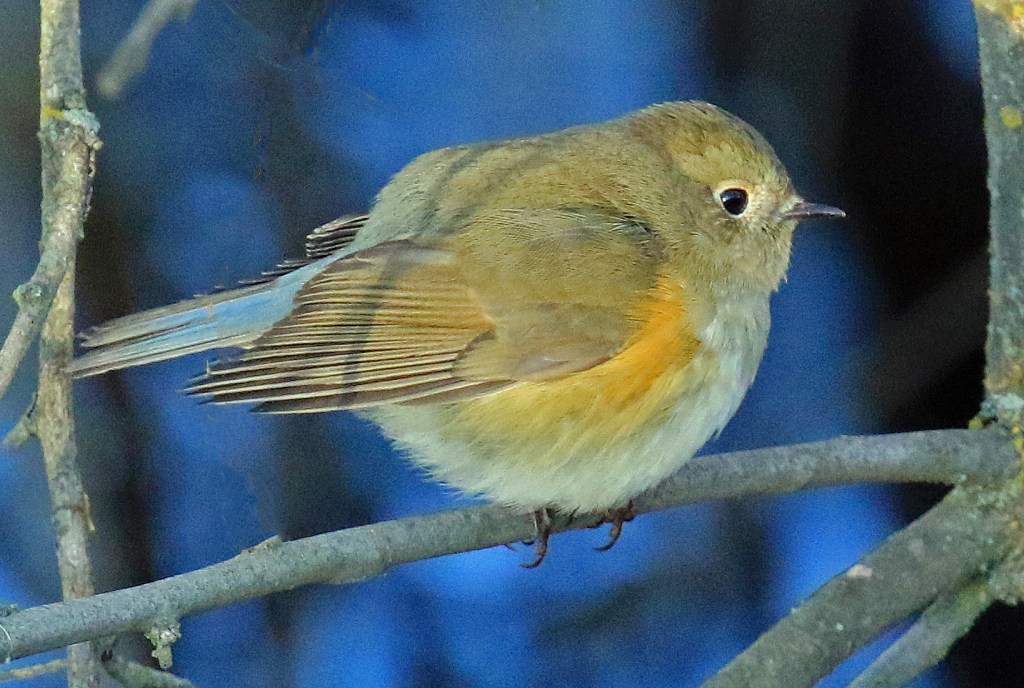
Without another trip to Eastern Washington, there really was nowhere to go where there was even a chance for multiple new species. The plan was to try for a species a day for a couple of days, make another trip East the next week and then hit the Coast on the 25th, stay over that night and do the pelagic trip on the 26th. If all went well I should end up around 205 or maybe even 210 species – past the minimum to be happy but still well below the larger goal. A YELLOW BILLED LOON had been reported daily at Potlatch State Park in Mason County. There was really no good quick way to get there. As a crow flies it was probably less than 60 miles but having to drive around the South Sound and or Hood Canal, it was a 2.5 hour trip over 100 miles. I did find the YELLOW BILLED LOON – distant scope views only – but in retrospect it was a long slow haul for a single bird. If I had planned better I would have incorporated a try for a MOUNTAIN QUAIL but that would have required an even earlier start and since I had abandoned hope for a Really Big BIG MARCH, I was happy to go for one at a time.
Week three was coming to an end and there was one more singleton new bird to try for. LONG BILLED DOWITCHERS had been seen at the 12th Street Marsh just north of the Everett Sewage Ponds in Snohomish County. This species was on my presumed easy list for the month figuring I would see them at Wylie Slough or elsewhere in Skagit County or if not then somewhere at or near the Coast. As it turned out my calculation had been wrong and there had only been three observations of the species in Washington prior to March 20 – a single bird at Wylie Slough in Skagit County on March 5th – 3 in Whatcom County on March 12th and a small flock at the same 12th Street Marsh on March 1st. Although I had birded near there many times, I had never been to the spot, so even if I missed the DOWITCHERS on the 21st, I figured it would be good to know about the location. As an aside, that is one of the benefits of doing a targeted project. You have to pay attention to observations on your “needs list” as they come in with resulting chases that are often to new areas. My project planning included many trips to areas that I was familiar with and knew I could usually count on certain species there, but mixed in were visits to new places – like Potlatch State Park, the Tri-Cities Airport and now the 12th Street Marsh that would become additions to familiar turf – places to be revisited in the future.
As soon as I got over a small rise next to the parking area at the 12th Street Marsh I saw a group of 24 LONG BILLED DOWITCHERS feeding in the mud and a VIRGINIA RAIL called. I only had 11 species in the brief time I was there but liked the habitat and expect it would produce more species and more shorebirds later in the year and I expect to be back.

Thus ended the third week of Big March. There had been lots of miles, lots of birds although fewer than hoped for, and the count was at 191. With Cindy’s surgery set for the 28th there would only be 6 more days of birding, but one would be again at the Coast and another would be the pelagic trip. Those two days should easily add the needed 9 species and I would probably go to Eastern Washington again where I should add at least 3 or 4 more species. I had to lower my expectations and realized that without the pelagic trip, I could be in trouble. I checked the 10 day forecast and it looked decent for the 26th in Westport. I needed that trip to be a go.
